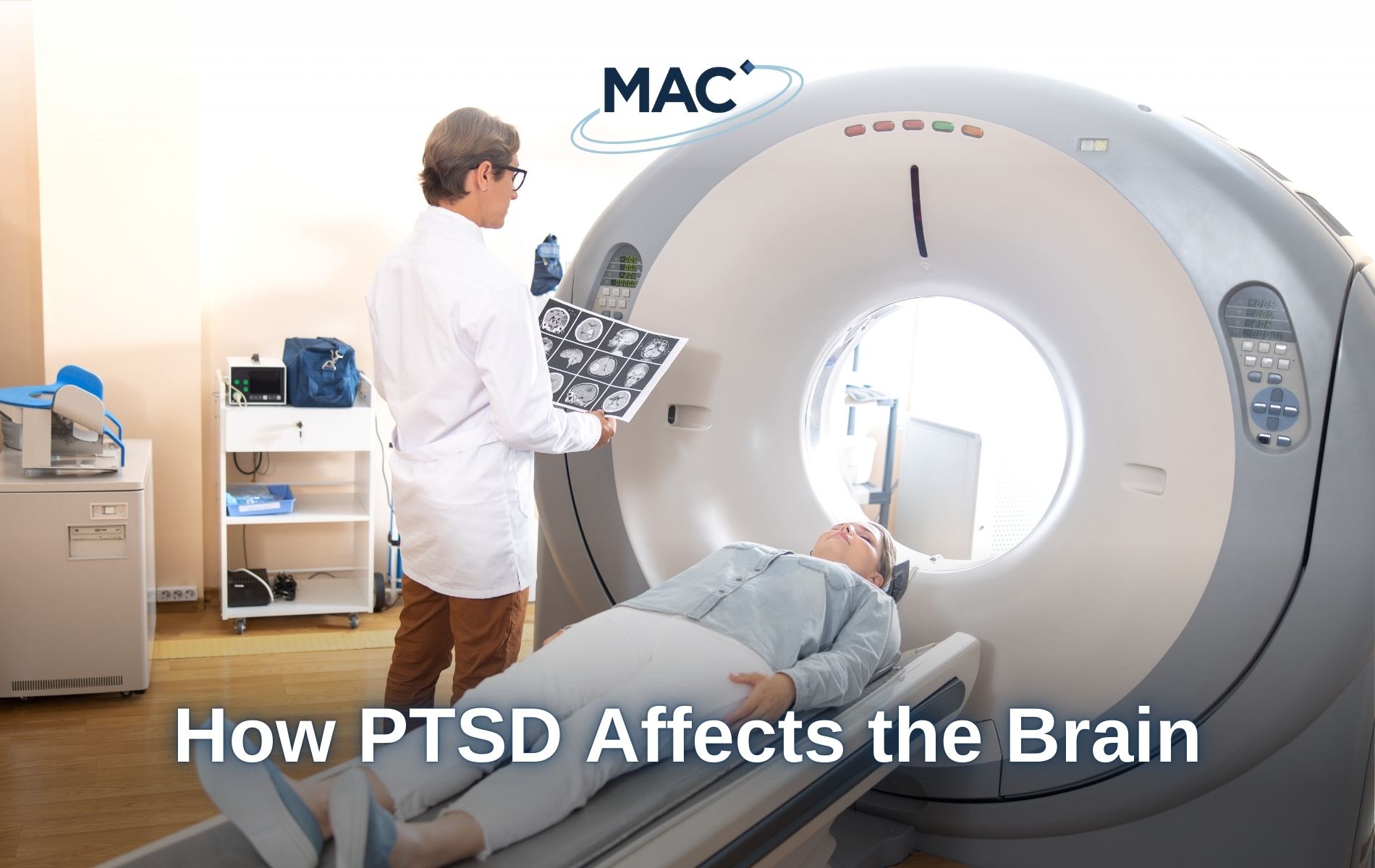Post Traumatic Stress Disorder (PTSD) is a complex mental health condition triggered by experiencing, witnessing or sometimes even hearing about a traumatic event. Symptoms can include flashbacks, nightmares, severe anxiety, and uncontrollable thoughts about the event. It’s estimated that around 1 in 10 people in the UK will experience PTSD at some point in their lives1.
Although PTSD manifests in various ways, its impact on the brain is profound, involving several key regions. Understanding these changes can shed light on the debilitating nature of PTSD and guide the development of more effective treatments.
The Brain Under Stress: Fight or Flight
At the core of PTSD’s effects on the brain is the body’s natural response to stress. When we encounter danger, the brain activates the “fight-or-flight” response through the hypothalamic-pituitary-adrenal (HPA) axis. This system releases hormones like adrenaline and cortisol, preparing the body to either fight the threat or escape it. However, in people with PTSD, this response becomes dysregulated, staying active long after the traumatic event has passed.
In one research study, patients with PTSD had on average 61% higher cortisol levels than the control group who did not live with PTSD2.
The Amygdala: Hyperactive Fear Processing
One of the most affected brain regions in PTSD is the amygdala, often called the brain’s ‘fear centre’. The amygdala is responsible for detecting threats and triggering the fear response. In people with PTSD, the amygdala becomes hyperactive, causing an exaggerated response to stimuli that remind them of the trauma.
This explains why someone with PTSD might experience panic or fear in situations that are relatively safe but reminds them of their traumatic experience. For instance, a war veteran might react with fear to loud noises that remind them of explosions, or a survivor of a car accident might become anxious while driving.
The amygdala’s heightened activity can also contribute to flashbacks, where the individual relives the traumatic event as though it were happening again in real time. In a survey of patients living with PTSD, around 49% reported experiencing flashbacks associated with their trauma3.
The Prefrontal Cortex: Impaired Emotional Regulation
In contrast to the overactive amygdala, the prefrontal cortex, which plays a crucial role in reasoning, decision-making, and regulating emotions, becomes underactive in people with PTSD. This part of the brain is responsible for keeping the amygdala’s fear responses proportional. When functioning properly, the prefrontal cortex can assess a situation logically and decide whether a fear response is appropriate.
However, in PTSD, this balance is disrupted. The weakened prefrontal cortex is unable to control the amygdala’s intense fear signals, leading to difficulty in managing emotions. This imbalance explains why individuals with PTSD often struggle with emotional regulation, making them more prone to anger, irritability, or extreme sadness. Research into UK veterans living with PTSD found that they were more likely to report anger and aggression4.
The Hippocampus: Damaged Memory Processing
Another key brain region affected by PTSD is the hippocampus, which is involved in memory formation and distinguishing between past and present experiences. In people with PTSD, the hippocampus is often smaller in size and less active. This reduction leads to challenges in creating new memories and distinguishing between safe and threatening environments.
PTSD can cause suppression of traumatic memories, leading to gaps in recall. In one study investigating asylum seekers, researchers found that roughly 70% of participants were diagnosed with PTSD, and symptoms of memory loss were present in 20% of the research participants5.
Treating PTSD
Some people living with PTSD may be prescribed antidepressants such as Selective Serotonin Reuptake Inhibitors (SSRIs). Unfortunately, 40% of those prescribed SSRIs, will not receive benefit from this medication, and only 20% to 30% will achieve complete remission6.
It is for this reason that more treatments need to be developed for PTSD. That’s why we are excited to be running a confidential clinical trial, evaluating the effectiveness of a new investigational oral medication on PTSD symptoms.
The clinical trial explores the effect of an investigational oral medication on PTSD symptoms when taken weekly over a 4-week period. Eligibility criteria include:
- Age 18 – 65 years
- Experiencing symptoms of PTSD due to a traumatic event that occurred in your life
- Able to visit your local MAC clinic up to 14 times over an approximate 4-month period
- Tried at least one treatment (psychotherapy or pharmacological/medicine) which failed to help treat symptoms of PTSD.
Reach out to us today via our PTSD Research Webpage to learn more about the study and see if you qualify to take part in this important research
1 PTSD UK – Post Traumatic Stress Disorder stats and figures
2 Psychoneuroendocrinology – Cortisol response to a cognitive stress challenge in posttraumatic stress disorder (PTSD) related to childhood abuse
3 Canadian Journal of Pain – Prevalence of pain flashbacks in posttraumatic stress disorder arising from exposure to multiple traumas or childhood traumatization
4 Healthcare – Anger and Aggression in UK Treatment-Seeking Veterans with PTSD
5 PLos One – Associations between memory loss and trauma in US asylum seekers: A retrospective review of medico-legal affidavits
6 P&T – Pharmacotherapy for Post-traumatic Stress Disorder In Combat Veterans




